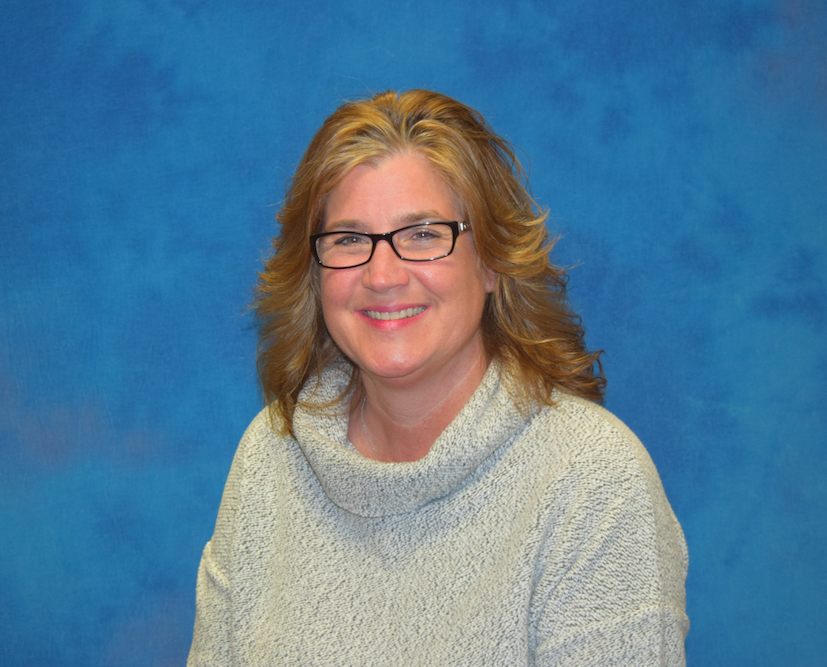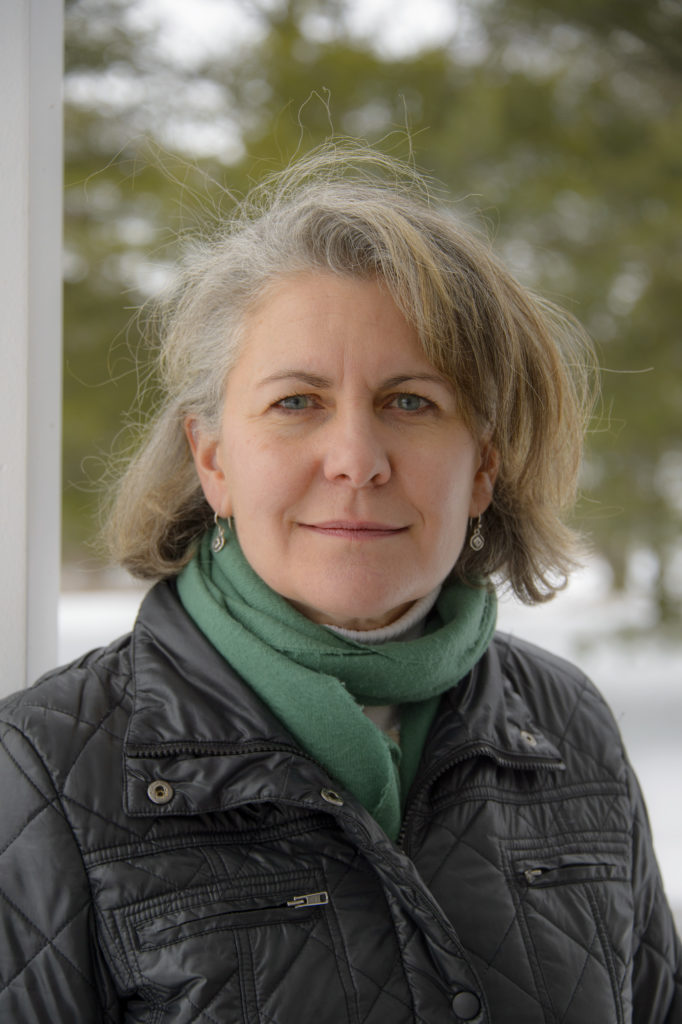Sturgeon Bay Common Council Election: District 7 Questionnaire
- Share
- Tweet
- Pin
- Share

Kirsten McFarlin-Reeths is employed at Hatco Corporation as an Administration and Communication Assistant. The married, 53 year-old mother of four is also an EMT-IV tech with Algoma Fire and Rescue and Para-Tran in Sturgeon Bay, and is a certified driving instructor with Excel Driving School, and has volunteered with several community organizations. If elected, she said she would bring “respect, trust, encouragement, daily learning, collaboration” to the council.
“We if elected officials have a duty to represent the city by making smart common sense decision that are in the best interest of the city and taxpayer. We need to be financially sound and continue to invest to improve the quality of live for our city and everyone.”

Kirsten McFarlin-Reeths 
Laurel Hauser
Incumbent council member Laurel Hauser is a married mother of two adult children with a Bachelor of Arts from Carroll College. The 55 year-old is co-chair of the Westside Waterfront Planning Committee, chair of the Parks and Rec Committee, and erves on the Plan Commission and Library Board. She has also been heavility involved with the Women’s Fund, Door County Land Trust, Moravian Church Board of Trustees, the Community Foundation’s “Growing Older Door County” Initiative, Magic Years Pre-school and the Library Foundation. My husband and I co-chaired the YMCA endowment campaign, and I co-chaired the Sturgeon Bay Skatepark fundraising initiative. In these capacities, and in my professional life (as editor of the Washington Island Observer and as Director of Charitable Giving for the Door County Land Trust), I have worked with others to not only visualize positive outcomes, but to do the hard work that’s necessary to achieve them while adhering responsibly to budgets.
What attributes and skills would you bring to the common council?
I’ve served the city council with integrity, and I pride myself on being able to work collaboratively with all of my fellow council members. I’m a moderate who values ingenuity, and I’m an optimist by nature. There’s a joy in working for the common good with people who are passionate and wise and dedicated. I believe in the power of community and listening to ideas, even if they come from unexpected sources and even if things get messy at times. However, my head is not in the clouds. I am cautious and diligent. I operate with a sense of honor. When I put my name on something, I work to see it through. At the end of the day, all we have is our good name and the things we’ve been fortunate to accomplish as part of a team, whether that team is family, co-workers or fellow community members.
What changes would you suggest, if any, to the way the city conducts council meetings and solicits public input at those meetings?
KM: Open round table discussions held at city hall or business venues. Using more on social media to input Questions & Answers. City hall to have suggestion boxes and post on newsletters. Council to get offsite to businesses and talk with public. Participate in attracting new developers to area and show them what a great city we live in and why they should invest in us. Time of meetings to be available for all to attend.
LH: When I took office in 2017, public comment had been removed from the agenda, council meetings were held at noon, and conventional wisdom held that the mayor single-handedly controlled the agenda. I worked to reinstate public comment, to move meetings to the evenings when more people can attend, and to change the agenda-setting policy to allow for council (and, thereby, citizen) involvement.
Council meetings are a great place to foster engagement. When people take the time to attend a meeting, they have generally given a lot of thought to the issue that brought them in, and in many cases have expertise or have done research. They deserve the opportunity to speak – the same opportunity as everyone else, with the same rules consistently applied. Through public comment, the council gets a pulse on what the community cares about, and it benefits from broader creativity and knowledge.
Would you change the way the city approaches economic development, and if so, how?
KM: I believe the city needs to promote more business development and manufacturing with that said incorporate onsite childcare provides for all in the industrial park an outside. Work with technical schools and high schools to promote 2 year tech degrees and hands-on training. We have to stay competitive in our wages and find ways to attract young people and family’s to move here.
We are a community of raising family’s , elderly and retired. Marketing why Sturgeon Bay is a great place to live and tourism to make people want to come back.
LH: Economic development is ultimately about creating a place where people want to live and work, a place that takes care of residents’ basic needs, but, beyond that, a place that inspires them and they’re proud to call home. By highlighting the things that make us unique – our history, our working waterfront, our natural beauty – we attract people. Investors and developers follow. Investing in our core pays back. New sidewalks and tree plantings on Egg Harbor Road attracted apartment developers. Those apartment buildings will help companies in the industrial park house workers. When economic developer Ed McMahon visited Door County, he shared a simple message: “A community’s appeal drives economic prosperity.”
A look up the peninsula shows what communities all over the nation and world know. Opening up waterfronts and investing in public spaces makes excellent economic sense – for tourists and for the people lucky enough to live there.
How should the city encourage development of more affordable apartments?
KM: Rent in Sturgeon Bay needs to be based off of what people make. We need more housing. Elderly housing, veterans housing and people with special needs. More families are now caring for their elderly parents as they want to stay independent for as long as possible. City council should be out working with developers in promoting new development.
LH: We can utilize the low-income housing tax credits program, look into housing conservation easements, clear underutilized infill parcels for new development and encourage re-use of the westside school site or the soon-to-be-vacant Nicolet Bank building.
Our council recently approved accessory dwelling units, allowing homeowners in permitted areas to create secondary living spaces. This is a progressive move that has worked well in other communities and addresses the fact that a sector of our population lives differently than it did a generation or two ago.
Most importantly, we should work closely and collaboratively with the Door County Economic Development Corporation and the Door County Housing Authority to learn from other communities. This is not a unique problem; we don’t have to reinvent the wheel.
If the proposed PRAT Tax to fund street improvements does not gain traction in the state legislature, what should the city do to address the state of its crumbling streets?
KM: As I stated in the League of Women voters forum on talks of possible Tollway’s. If the PRATT tax does not come thru we need to come up with new funding as we have fallen behind in our roads. So this would be brought to the table to discuss.
LH: This is a problem that is obviously bigger than Sturgeon Bay and bigger than streets. It goes to the heart of community investment and shared resources. A report from the nonpartisan Wisconsin Policy Forum shows that from 1975 to 1997, municipalities got more in state aid than they did from property taxes. That is reversed now, and to make matters worse, there is a state-imposed levy limit. That hurts Wisconsin, especially as compared to our immediate neighbors. Who wants to invest in a community that can’t pave its roads?
Because we have few options, I do support the P.R.A.T. I do not, however, support its alternative, the wheel tax, which taxes those working sub-living-wage jobs the same amount it taxes their wealthier neighbors. The real solution needs to come from a state-level alternative revenue system.
What is the biggest opportunity you see for the City of Sturgeon Bay?
KM: Sturgeon Bay has a lot of positive things going on. Great schools and teachers, low crime rate, a strong industrial park ,a hospital the is progressing to meet the need of the people. Ship building & repair and most of all the beauty that we live in. We need to continue to come up with ways to make Sturgeon Bay attractive to want to come and vacation, live here raise families and retire. “The Door Is Always Open”
What is the biggest opportunity you see for the City of Sturgeon Bay?
LH: Our biggest opportunity is our people. Residents of Sturgeon Bay are passionate about our community. Some were born here; some left and have come home; many come from elsewhere with great ideas, expertise and energy. We are not tapping that resource as we could. There are numerous vacancies on committees – and not because people don’t want to serve. A big opportunity, no matter who the next mayor is, is to fill our committees with a diverse, inclusive mix of people. And it’s critical that some of those people are young. If we want young people to come to our community, we need to let them invest themselves in it. They will grow, through that involvement, to be leaders of the future.
Sturgeon Bay will benefit from letting a little more light in. As I mentioned earlier, I’m an optimist. I think this is starting to happen.

